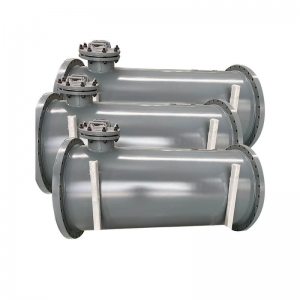When it comes to choosing a Ptfe tank, there are several key physical and chemical performance indicators that users should consider. Ptfe tanks, also known as polytetrafluoroethylene tanks, are widely used in various industries due to their excellent chemical resistance and high-temperature performance. These tanks are commonly used for storing and transporting corrosive chemicals, acids, and other hazardous materials. Therefore, it is crucial for users to understand the key performance indicators that can help them make an informed decision when selecting a Ptfe tank for their specific application.
Physical Performance Indicators:
1. Mechanical Strength: One of the most important physical performance indicators for Ptfe tanks is their mechanical strength. The tank should be able to withstand the internal pressure and external loads without deforming or failing. Users should look for tanks that have high tensile strength and impact resistance to ensure long-term durability and safety.

2. Thermal Stability: Ptfe tanks should exhibit excellent thermal stability, especially when used in high-temperature applications. The tank should be able to maintain its structural integrity and chemical resistance at elevated temperatures without any significant degradation or loss of performance.
3. Dimensional Stability: Dimensional stability is another crucial physical performance indicator for Ptfe tanks. The tank should maintain its shape and size over a wide range of operating temperatures to prevent any leakage or structural issues.
Chemical Performance Indicators:
1. Chemical Resistance: Perhaps the most critical performance indicator for Ptfe tanks is their chemical resistance. These tanks are often used for storing highly corrosive and reactive chemicals, so it is essential that they exhibit exceptional resistance to a wide range of acids, bases, solvents, and other aggressive substances.
2. Permeation Resistance: Ptfe tanks should also demonstrate high permeation resistance to prevent the diffusion of hazardous chemicals through the tank walls. This is particularly important for preventing environmental contamination and ensuring the safety of the surrounding area.
3. Cleanability: The ease of cleaning and maintaining Ptfe tanks is another important consideration for users. The tank lining should be non-porous and resistant to fouling, allowing for easy cleaning and preventing the buildup of contaminants or residues.
4. Compatibility: Users should also consider the compatibility of the Ptfe tank lining with the specific chemicals and substances that will be stored in the tank. It is important to ensure that the tank lining is compatible with the intended contents to avoid any chemical reactions or degradation of the lining material.

In addition to these key performance indicators, users should also consider factors such as regulatory compliance, industry standards, and the reputation of the manufacturer when choosing a Ptfe tank. It is essential to work with a reputable supplier who can provide guidance and expertise in selecting the right Ptfe tank for the intended application.
In conclusion, the key physical and chemical performance indicators that users should be concerned about when choosing a Ptfe tank include mechanical strength, thermal stability, dimensional stability, chemical resistance, permeation resistance, cleanability, and compatibility with the stored substances. By carefully evaluating these performance indicators and working with a trusted supplier, users can ensure the safe and reliable storage of hazardous materials in Ptfe tanks.
Post time: Apr-19-2024

